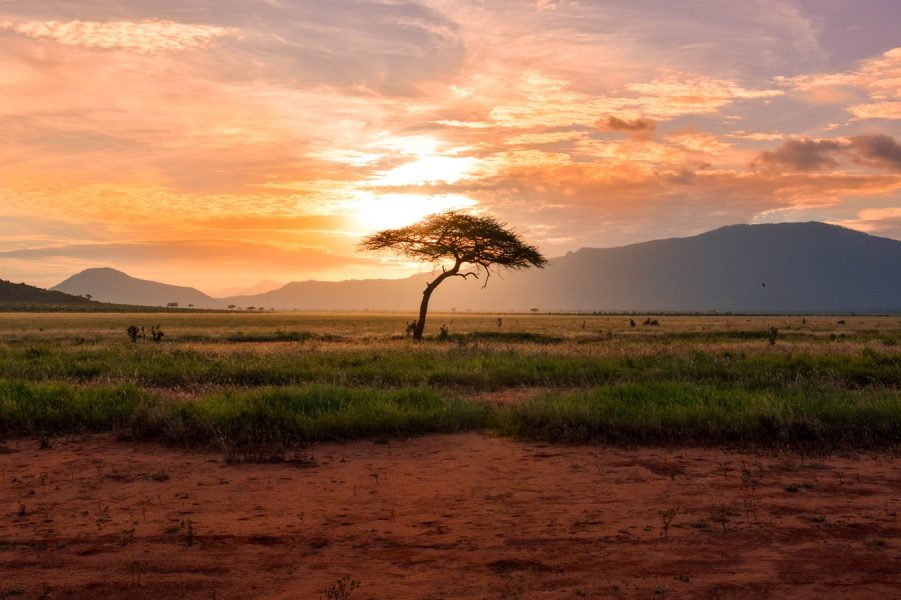
The inequality of climate change: How low-income countries are being hit the hardest (1/2)
14/01/2021
Climate change is expected to affect every country across the world. Despite being a global crisis, its impact will not be felt equally, with many regions, mainly developing countries already being disproportionately affected. Nigeria, Haiti, Kiribati, and Manila have been identified as low-income countries currently facing some of the harshest consequences brought on by a dangerously warming planet. Not only do these countries already have geographically warmer climates but they are also heavily reliant on climate-sensitive sectors such as tourism, forestry, and agriculture to generate income.
As temperatures continue to rise, these low latitude countries grow increasingly vulnerable to the acute ramifications of the world potentially warming by more than 1.5° C, with estimates showing that 80% of any climate damage could be concentrated in these regions.
Nigeria
Sub-Saharan Africa, home to a vast range of diverse ecosystems and cultures, remains one of the most economically unstable parts of the world according to the UN’s Human Development Index. With an average poverty rate of 41%, Sub-Saharan Africa is comprised of 27 of the world’s poorest countries. It also remains one of the fastest-growing regions in the world with its population expected to approach 2 billion by 2050.
High poverty rates and an increasing population leave African countries uniquely exposed to a changing climate due to their geographical location and socio-economic situation. Take the city of Lagos in Nigeria. Considered a major economic hub for Nigeria, it is set to double in population over the next 15 years, growing to nearly 24 million by 2035. With strain already being placed on its resources and infrastructure, climate change could further threaten its stretched economy as Lagos is situated on the Gulf of Guinea. As temperature and sea levels rise, the potential of coastal erosion, flooding, and contaminated water increases in the Gulf, all of which could harm an area already facing tremendous socio and economic challenges.
Food security will be a major challenge due to droughts and shifts in rainfall, with climate experts predicting a 27-32% drop in agricultural yields. This decrease will not be seen uniformly across the land and the disparity will undoubtedly create conflict, potentially refuelling the migrant crisis which has subsided in recent years. In February of this year, UNICEF warned that 4.8 million people would be at risk of food insecurity if no appropriate actions were taken. Highlighting how bad the situation was prior to Covid-19, UN World Food Project Regional Director Chris Nikoli said in December 2019;
“The number of food-insecure people has doubled after harvest time when it should have dropped.”
Haiti
Sub-Saharan Africa is not alone with Latin America also suffering the effects of climate change. The El Niño has resulted in the region’s agricultural production falling, as flooding washes away crops. Currently, one-third of Latin America’s population does not have access to reliable and sustainable sources of fresh water. While this is blamed on the unequal natural distribution of freshwater and a lack of funding for infrastructure projects (made worse by poor management of the already existing infrastructure), climate change is almost certainly playing its part in this looming humanitarian crisis.
Climate change is also causing the appearance of hurricanes across Latin America to become is more frequent and increasingly disruptive. We only need to look at Honduras and Nicaragua to see the terrible human cost of this increase: In 1998, Hurricane Mitch battered the two tiny territories and 10,000 people lost their lives, inflicting damage amounting to 40% of Honduras’ GDP.
Often, Mexico is imagined as a desert, pockmarked by rugged arid landscapes and cactus. Whilst this image is true for the north of the country, the rest experiences a subtropical climate. However, there is now a real danger that the arid landscape of the north will expand southwards, creating drought conditions. These droughts will, like in Africa, decrease food security, and put the populations of these regions under increased stress and risk of conflict.
However, it has been estimated that crops such as maize, only experience a yield decrease of 1% for each day the crop is exposed to temperatures above 30°c. By limiting the exposure to these temperatures, Latin America could reduce the impact of climate change on its nation’s crops. In fact, countries in Latin America have banded together with the European Union in the EUROCLIMA project to try to encourage coordinated strategies and public policies to try to mitigate the impact of climate change on the country.

